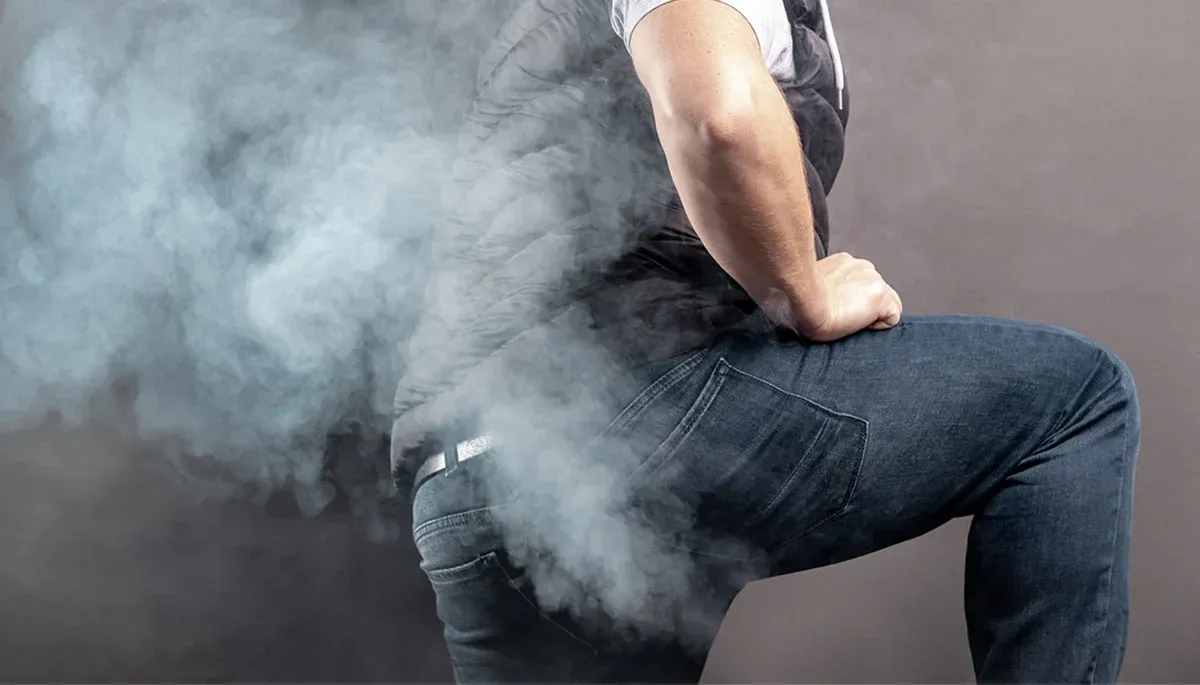When building your new home, owners often focus on aesthetics, functionality, and cost. However, an equally critical, yet frequently overlooked aspect is the impact of construction materials and household products on indoor air quality and overall health.
One significant concern in this regard is off-gassing—a process where volatile organic compounds (VOCs) are released into the air from various materials and products. In this post we will look into the details of off-gassing, its sources, potential health effects, and strategies to mizzen its impact in your new home.
What is Off-Gassing?
Off-gassing refers to the release of chemicals, particularly volatile organic compounds (VOCs), from materials and products used within homes. These compounds can evaporate into the air at room temperature, contributing significantly to indoor air pollution. VOCs are found in a wide range of products, from paints and varnishes to adhesives, flooring, and furniture. Understanding off-gassing is important for creating a safe and healthy indoor environment, as these emissions can persist long after the initial installation of the materials.
Common Sources of Off-Gassing
- Building Materials: Many construction materials, such as plywood, particleboard, and medium-density fibreboard (MDF), contain formaldehyde and other chemicals used in adhesives and finishes. These materials are ubiquitous in modern construction due to their affordability and versatility, but they are also significant sources of VOCs.
- Paints and Finishes: Traditional paints, varnishes, and stains often contain VOCs that continue to off-gas for weeks or even months after application. These products are essential for protecting and beautifying surfaces, but their chemical emissions can adversely affect indoor air quality.
- Flooring: Carpets, vinyl flooring, and even some hardwood finishes can release harmful chemicals. The adhesives used during installation and the materials themselves can be significant sources of off-gassing, particularly in the first few months after installation.
- Furniture and Upholstery: New furniture, especially those made from pressed wood products or containing synthetic foam, can be significant sources of VOCs. Upholstered furniture often contains flame retardants and other chemicals that can off-gas over time.
- Household Products: Cleaning supplies, air fresheners, and other everyday products can contribute to off-gassing. Many of these products contain a variety of chemicals designed to enhance performance but can release VOCs into the air.
Health Effects of Off-Gassing
Exposure to VOCs can have both short-term and long-term health effects. Short-term exposure may cause headaches, dizziness, nausea, and irritation of the eyes, nose, and throat. These symptoms can be particularly pronounced in sensitive individuals, such as those with allergies or respiratory conditions.
Long-term exposure, especially to higher concentrations of VOCs, can lead to more serious health issues. These may include respiratory problems, liver and kidney damage, and even cancer. The potential health risks associated with VOCs make it essential to understand and manage off-gassing in your home.
Minimising Off-Gassing in Your Home
Reducing the impact of off-gassing requires a multifaceted approach that includes careful selection of materials, effective ventilation, and regular maintenance. Here are some strategies to help minimise off-gassing in your home:
- Minimising VOC Containing Products: When selecting paints, finishes, and building materials, look for products labelled as low-VOC or zero-VOC. These products emit fewer harmful chemicals and are better for indoor air quality. Many manufacturers now offer low-VOC alternatives for a wide range of products, from paints and adhesives to flooring and furniture.
- Ventilation: Ensure your home is well-ventilated, especially during and after the construction phase. Use exhaust fans, open windows, and consider installing a whole-house ventilation system to help dissipate VOCs. Proper ventilation is crucial for reducing indoor air pollution and maintaining a healthy living environment.
- Air Purification: Invest in a good quality air purifier with a HEPA filter to help remove VOCs and other pollutants from the air. Air purifiers can be particularly effective in bedrooms and living areas, where people spend the most time.
- Allow Materials to Off-Gas Before Installation: If possible, let new materials such as flooring and furniture off-gas in a well-ventilated area before bringing them into your home. This practice, known as pre-off-gassing, can significantly reduce the amount of VOCs released once the materials are installed.
- Seal or Coat Pressed Wood Products: If you have to use products made from pressed wood, choose those that are laminated or have a sealed surface to reduce emissions. Applying a sealant to exposed surfaces can also help reduce VOC emissions.
- Regular Cleaning and Maintenance: Regularly clean and maintain your home to reduce dust and VOC accumulation. Use non-toxic cleaning products to minimise additional chemical exposure. Regular cleaning can help remove VOCs that settle on surfaces and prevent them from being re-released into the air.
- Monitor Indoor Air Quality: Consider using an indoor air quality monitor to keep track of VOC levels in your home. These devices can provide real-time data on air quality, allowing you to take prompt action if VOC levels rise.
Off-Gassing Sources
Understanding the specific sources of off-gassing can help you make more informed decisions about the materials and products installed into your newhome.
Here’s a closer look at some of the most common sources:
Building Materials
- Plywood and Particleboard: These engineered wood products are commonly used in construction due to their strength and affordability. However, they often contain urea-formaldehyde resins, which can off-gas formaldehyde, a known carcinogen. Opting for exterior-grade plywood, which uses phenol-formaldehyde resin that off-gases at a slower rate, can be a safer choice.
- Medium-Density Fibreboard (MDF): MDF is frequently used for cabinetry, furniture, and moulding. Like particleboard, MDF can off-gas formaldehyde. Choosing MDF products labelled as low-emitting or made with alternative binders can help reduce off-gassing.
Paints and Finishes
- Traditional Paints: Conventional paints can release VOCs during application and drying. Low-VOC and zero-VOC paints are widely available and offer similar performance with fewer emissions. When painting, ensure proper ventilation and consider using air purifiers to capture VOCs.
- Varnishes and Stains: These products are used to protect and enhance the appearance of wood surfaces. Water-based varnishes and stains typically have lower VOC content compared to their oil-based counterparts.
Flooring
- Carpet: New carpets can release VOCs from the fibers, backing materials, and adhesives used during installation. Look for carpets certified by independent organisations, such as Green Label Plus, which test for low VOC emissions.
- Vinyl Flooring: Vinyl products, including luxury vinyl tiles (LVT) and sheets, can off-gas chemicals such as phthalates and VOCs. Alternatives like linoleum, which is made from natural materials, can be a healthier option.
- Hardwood Finishes: Traditional polyurethane finishes can release VOCs. Water-based polyurethane and natural oil finishes typically have lower VOC content and are less harmful.
Furniture and Upholstery
- Pressed Wood Furniture: Furniture made from particleboard, MDF, or plywood can be significant sources of formaldehyde. Solid wood furniture, while often more expensive, does not off-gas VOCs and can be a safer choice.
- Synthetic Foam Upholstery: Foam cushions and mattresses can release VOCs from flame retardants and other chemicals.
Household Products
- Cleaning Supplies: Many conventional cleaning products contain VOCs and other harmful chemicals. Choosing eco-friendly, non-toxic cleaning products can reduce indoor air pollution.
- Air Fresheners: These products often contain a mix of VOCs that can contribute to indoor air pollution. Natural alternatives, such as essential oils, can provide fragrance without harmful emissions.
Advanced Strategies for Minimising Off-Gassing
For home owners looking to go above and beyond in minimising off-gassing, several advanced strategies can further improve indoor air quality:
- Green Building Certifications: Consider pursuing green building certifications, such as LEED (Leadership in Energy and Environmental Design) or WELL Building Standard, which emphasise the use of low-emission materials and healthy building practices.
- Healthy Home Designs: Work with architects and builders experienced in designing and constructing healthy homes. This approach often includes using natural and low-emission materials, optimising ventilation, and incorporating passive design principles to enhance indoor air quality.
- Smart Home Technology: Integrate smart home technology that monitors and controls indoor air quality. Systems that automatically adjust ventilation based on real-time air quality data can help maintain a healthy indoor environment.
- Biophilic Design: Incorporate biophilic design principles, which focus on connecting occupants with nature. This approach can include using natural materials, maximising natural light, and incorporating indoor plants that can help improve air quality.
Conclusion
Understanding and mitigating off-gassing is important for maintaining a healthy indoor environment, particularly in new homes. By being mindful of the materials and products you choose and ensuring proper ventilation, you can significantly reduce the impact of VOCs on your health and well-being.







